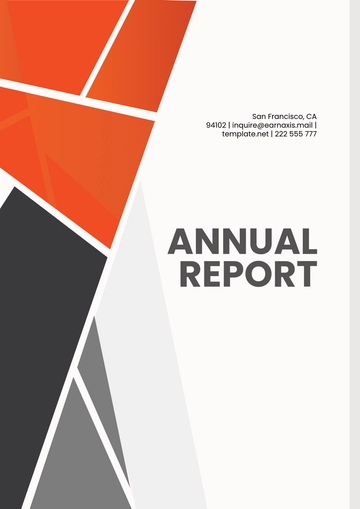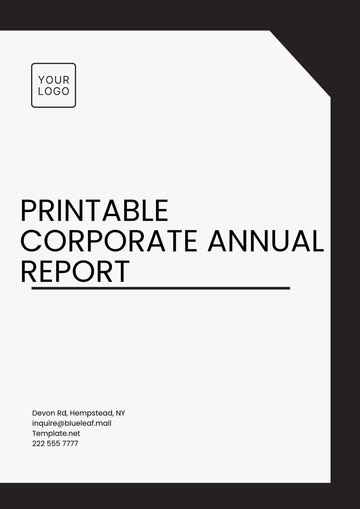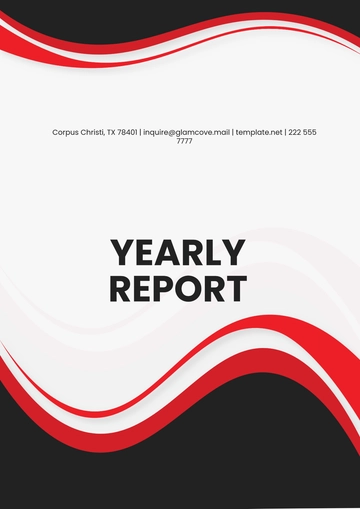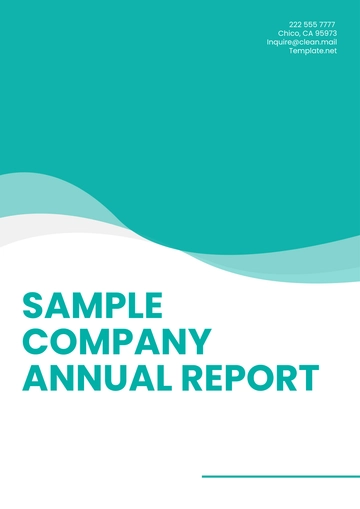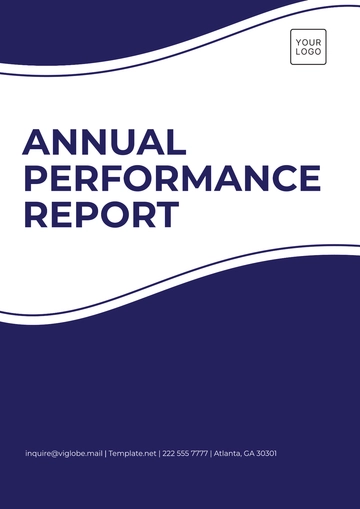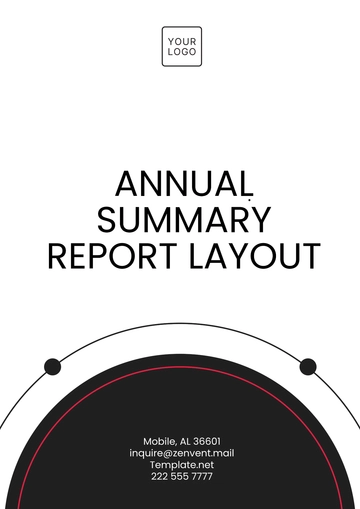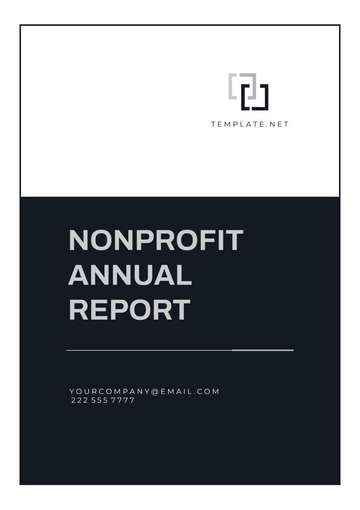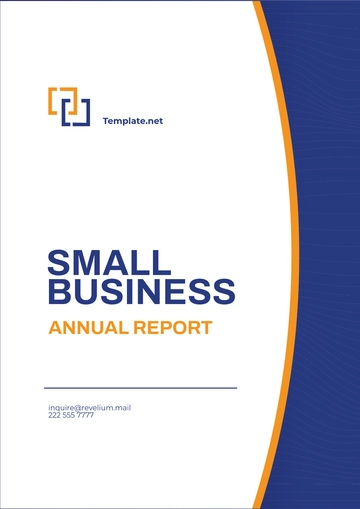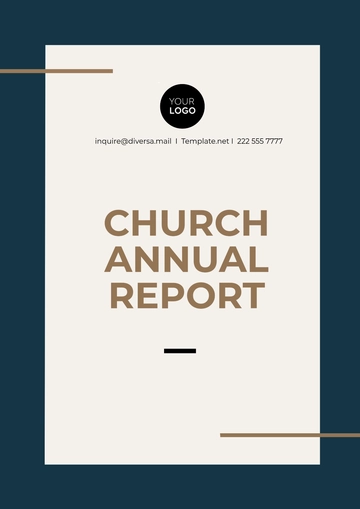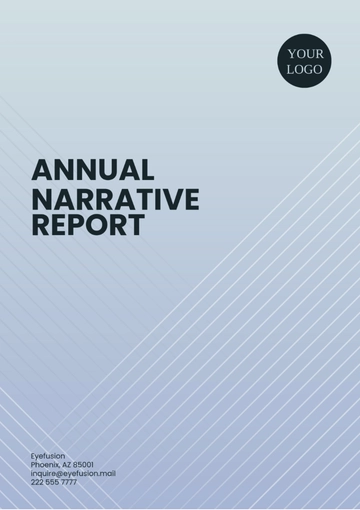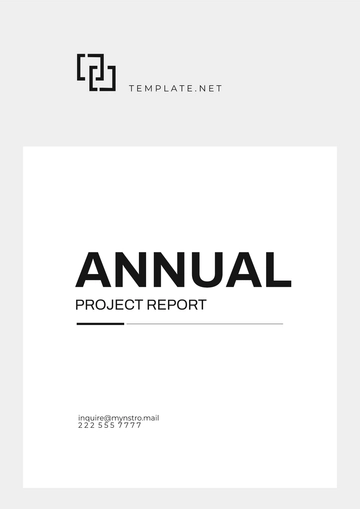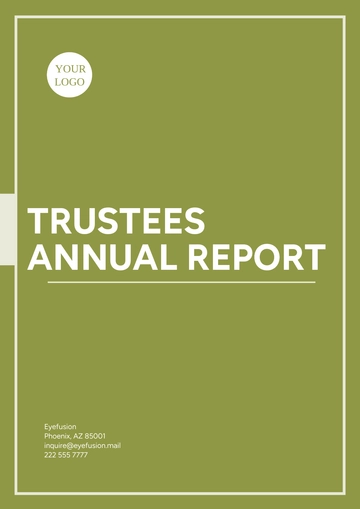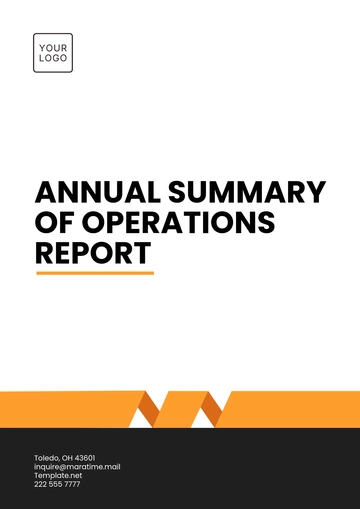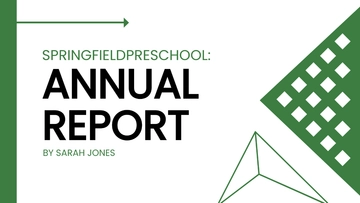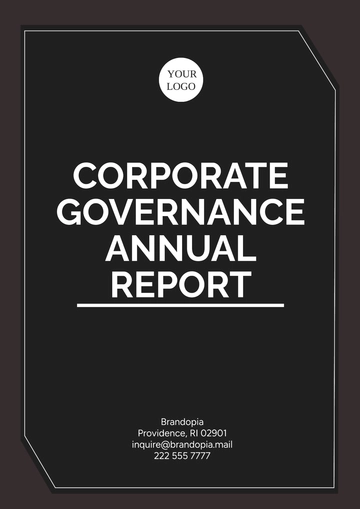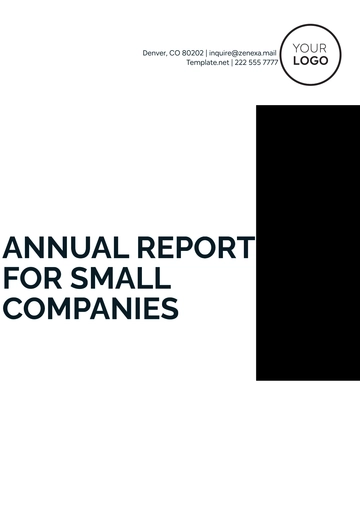Free Email Marketing Year-end Report on Conversions
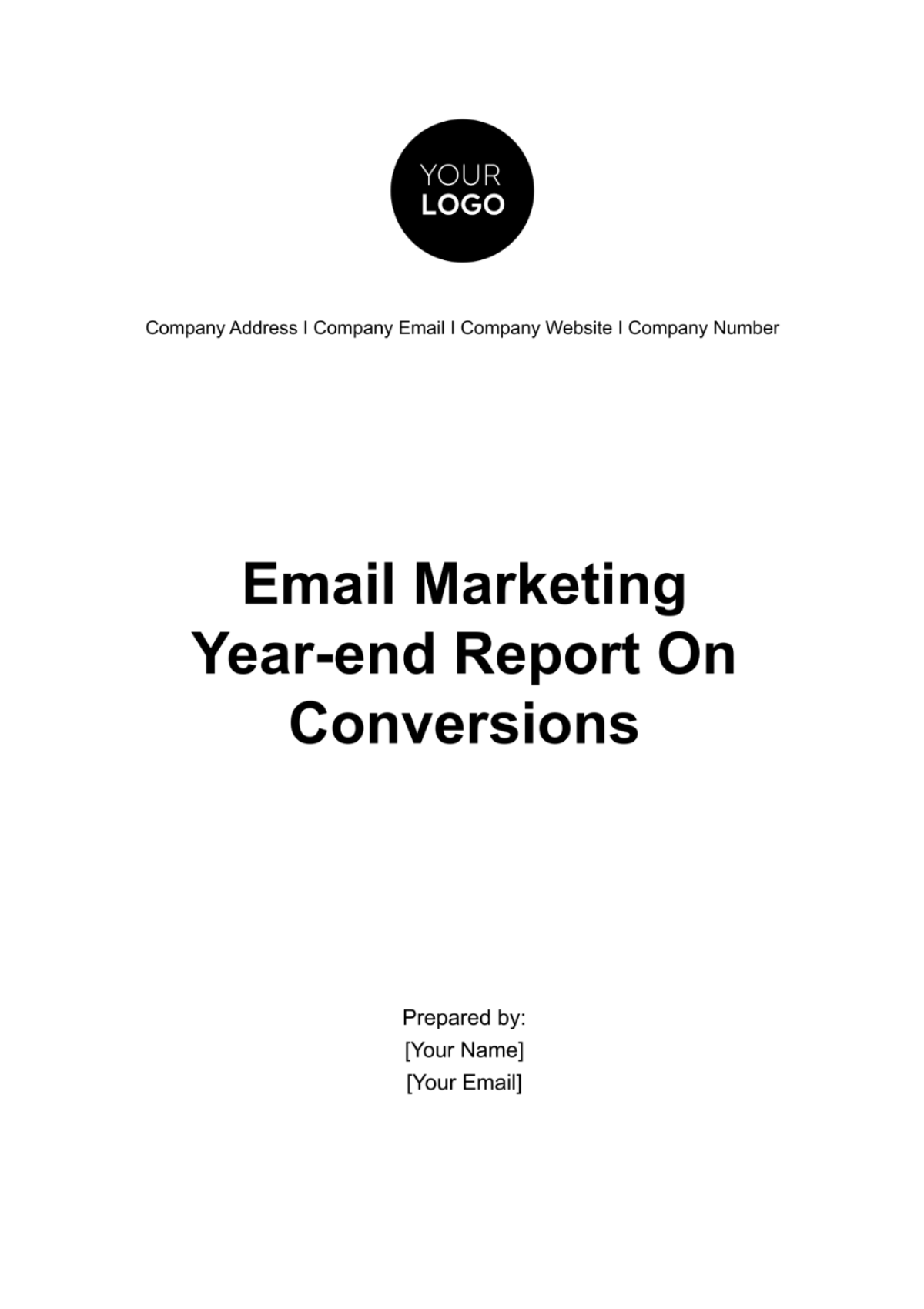
Executive Summary
A. Overview of Conversions
In [Year], our email marketing efforts have shown remarkable success in driving conversions. We recorded a total of [00,000] conversions, reflecting a [00]% increase compared to the previous year. This robust performance demonstrates the effectiveness of our strategies in engaging and converting our audience.
Yearly Conversion Trends
The table below illustrates a detailed view of the yearly conversion trends:
Year | Conversions | Yearly Growth |
[Year] | 10,250 | 18% |
This data shows a steady year-over-year growth, indicating that our strategies are resonating with our audience and driving more conversions.
B. Key Highlights
Our email marketing campaigns have delivered outstanding results in [Year]. The following key highlights demonstrate the strength of our efforts:
Conversion Rate: Our conversion rate reached [00]%, showing a substantial improvement from the previous year.
Average Order Value: The average order value stood at $[000], indicating the quality of conversions.
ROI: We achieved an impressive ROI of [00]%, indicating the cost-effectiveness of our campaigns.
Top Conversion Source: Newsletter Subscribers played a crucial role in driving conversions, accounting for [00]% of the total.
C. Recommendations
To sustain and build upon this growth, we recommend the following strategies:
Advanced Personalization: Implement more advanced personalization techniques to create hyper-targeted campaigns.
Segmentation: Continue refining our customer segmentation strategies to create tailored content.
Emerging Platforms: Explore emerging email marketing platforms and channels to expand our reach and engage with a broader audience.
Year-End Conversion Statistics
A. Total Conversions
In [Year], we achieved a total of [00,000] conversions, a notable increase from the [00,000] conversions in [Year]. This [00]% growth in conversion numbers underlines the effectiveness of our email marketing campaigns in driving customer engagement and action.
B. Conversion Rate
Our conversion rate reached [00]%, showcasing consistent improvement over the last year. This impressive conversion rate is a result of our focused efforts in crafting compelling content and optimizing the customer journey.
C. Quarterly Comparison
Email Campaign Performance
A. Campaign Overview
In [Year], we executed a total of [00] email marketing campaigns, each designed to achieve specific objectives. Our approach was data-driven and customer-centric, resulting in an overall open rate of [00]% and a click-through rate (CTR) of [00]%. This demonstrates the effectiveness of our campaigns in capturing audience attention and encouraging action.
B. Top Performing Campaigns
We identified several top-performing campaigns, showcasing our ability to engage customers effectively. Here are the three campaigns that stood out:
Campaign | Conversion Rate | Objective | Strategy |
"Spring Sale" | 25% | Promoting seasonal discounts and products. | Utilized compelling visuals and limited-time offers. |
C. Campaign A/B Testing Results
We actively conducted A/B testing to fine-tune our campaigns. The results indicated that personalized subject lines and interactive content significantly improved conversions. Here are some key findings:
Personalized Subject Lines: Campaigns with personalized subject lines showed a [00]% higher open rate.
Interactive Content: Emails with interactive elements, such as videos and quizzes, had a [00]% higher CTR.
D. Campaign Performance Over Time
To visualize the performance of these top campaigns over time, here's a line chart depicting the conversion rates of these campaigns in each quarter of [Year]:
Audience Engagement Analysis
A. Subscriber Growth
In [Year], our subscriber base grew by [00]%, ending the year with [000,000] subscribers. This steady growth indicates a strong appeal of our content and the effectiveness of our strategies in attracting and retaining subscribers.
B. Open Rate Analysis
Our open rate averaged [00]% throughout the year, indicating a high level of engagement with our emails. We have successfully captured the attention of our subscribers, which is crucial for driving conversions.
C. Click-Through Rate (CTR) Analysis
The CTR remained steady at [00]%, demonstrating the effectiveness of our content in driving traffic to our website. The engagement generated from our emails has a direct impact on our conversion numbers.
Conversion Funnel Analysis
A. Funnel Stages
Our conversion funnel consists of several key stages:
Awareness: This is the stage where potential customers become aware of our products or services, often through marketing efforts.
Consideration: In this stage, potential customers are evaluating our offerings, comparing them to competitors, and deciding whether to move forward.
Decision: Customers in this stage have decided to make a purchase, but they may still be comparing options.
Conversion: This is the final stage where a potential customer becomes a paying customer.
B. Funnel Dropout Points
We've identified some significant dropout points in our conversion funnel:
Awareness to Consideration: Many potential customers drop out at the consideration stage, indicating a need for more persuasive content.
Decision to Conversion: Some customers decide to purchase but then abandon their carts. We need to address cart abandonment issues.
C. Funnel Optimization Strategy
To address these dropout points, we plan to implement the following strategies:
Content Enhancement: We will create more informative content in the consideration stage to guide potential customers.
Cart Recovery Campaigns: For cart abandoners, we'll implement cart recovery email campaigns with incentives to complete the purchase.
Customer Segmentation
A. Segment Performance
Our customer segmentation strategy has yielded valuable insights into different customer segments. Here's an overview of how some key segments performed:
Loyal Customers: This segment displayed a remarkable 30% conversion rate, indicating the effectiveness of loyalty-focused campaigns.
Cart Abandoners: Cart abandoners have a 10% conversion rate, showing potential for improvement.
New Subscribers: New subscribers had a 15% conversion rate, reflecting the importance of effective onboarding campaigns.
B. Targeted Campaign Analysis
Campaigns tailored to specific segments outperformed general campaigns. For example, personalized offers for loyal customers resulted in a 35% conversion rate.
C. Personalization Impact
The impact of personalization is evident in our data. Personalized product recommendations in emails led to a 15% increase in conversion rates.
Revenue Attribution
A. Conversion Revenue Breakdown
In [Year], the revenue generated from conversions can be broken down as follows:
Organic Search: [00]%
Email Marketing: [00]%
Social Media: [00]%
Referral: [00]%
This data indicates that email marketing plays a significant role in driving revenue, contributing [00]% of the total revenue generated from conversions.
B. Channel Contribution
Email marketing contributed to $[00] million in revenue, which makes it a substantial revenue driver. This demonstrates the effectiveness of our email marketing efforts in generating sales and revenue.
C. ROI Analysis
Our email marketing initiatives achieved an impressive return on investment (ROI) of [00]%. This figure reflects the cost-effectiveness of our campaigns, which generated substantial revenue with efficient resource allocation.
Email Marketing Strategies
A. Content Strategy
Our content strategy was centered on delivering valuable and engaging content to our subscribers. Key elements of our content strategy include:
Educational Content: We provided informative articles and guides related to our products and industry.
Promotions: We offered exclusive discounts, seasonal sales, and promotions to encourage conversions.
Product Highlights: Our product spotlight campaigns showcased specific products in a compelling way.
B. Timing and Frequency
We carefully timed our email sends to coincide with specific events, seasons, and holidays. We also managed the frequency of our emails to avoid overwhelming subscribers while staying top of mind.
Holiday Campaigns: We sent holiday-themed emails during peak shopping seasons.
Event-triggered Emails: We sent emails on special occasions such as birthdays and anniversaries.
Weekly Newsletters: We maintained a weekly newsletter to keep subscribers informed and engaged.
C. Subject Line Analysis
Our subject lines were crafted with precision to capture the attention of recipients and entice them to open the emails. Key findings from subject line analysis include:
Personalization: Subject lines with the recipient's name or personalized offers performed exceptionally well.
Emotional Appeal: Subject lines that elicited emotions or curiosity were effective in driving open rates.
D. Interactive Content
In [Year], we introduced interactive elements in our emails. This included interactive product showcases, quizzes, and videos. Interactive content significantly enhanced engagement, with a [00]% higher click-through rate in campaigns featuring these elements.
E. User-Generated Content
We incorporated user-generated content in our email campaigns, such as customer reviews and testimonials. This strategy built trust and social proof, contributing to a [00]% increase in conversions.
Our email marketing strategies in content, timing, subject lines, interactivity, and personalization were instrumental in achieving the remarkable results in [Year]. These strategies are a testament to our customer-centric approach and data-driven decision-making.
Conclusion
In conclusion, the year [Year] was a significant year for our email marketing efforts, and the results were nothing short of impressive. Our data-driven strategies and customer-centric approach played a pivotal role in achieving remarkable growth in conversions and revenue.
Our year-end report highlighted several key findings:
Steady Growth: We recorded a [00]% increase in conversions compared to the previous year. This growth reflects the effectiveness of our email marketing strategies in engaging and converting our audience.
Top Performing Campaigns: Through a detailed analysis, we identified top-performing campaigns like the [Campaign Name], [Campaign Name] and [Campaign Name]. These campaigns showcased our ability to engage customers effectively and drive conversions.
Segmentation Success: Our customer segmentation strategy yielded valuable insights into different customer segments, with loyalty-focused campaigns showing a [00]% conversion rate. Personalization played a significant role in segment-specific campaigns.
Revenue Attribution: Email marketing contributed [00]% of the total revenue generated from conversions, emphasizing its substantial role in driving revenue. An impressive ROI of [00]% underscored the cost-effectiveness of our email marketing campaigns.
Strategic Elements: Our content strategy focused on educational content, promotions, and product spotlight campaigns. Timing and frequency were optimized to engage subscribers without overwhelming them. Subject line analysis, interactivity, user-generated content, and personalization played vital roles in our success.
- 100% Customizable, free editor
- Access 1 Million+ Templates, photo’s & graphics
- Download or share as a template
- Click and replace photos, graphics, text, backgrounds
- Resize, crop, AI write & more
- Access advanced editor
Reflect and strategize with the Email Marketing Year-end Report on Conversions Template from Template.net. This editable and customizable resource unveils insights into your email campaigns. Tailor it effortlessly to analyze and optimize. Enjoy the added convenience of being editable in our Ai Editor Tool, making year-end reporting a breeze.
You may also like
- Sales Report
- Daily Report
- Project Report
- Business Report
- Weekly Report
- Incident Report
- Annual Report
- Report Layout
- Report Design
- Progress Report
- Marketing Report
- Company Report
- Monthly Report
- Audit Report
- Status Report
- School Report
- Reports Hr
- Management Report
- Project Status Report
- Handover Report
- Health And Safety Report
- Restaurant Report
- Construction Report
- Research Report
- Evaluation Report
- Investigation Report
- Employee Report
- Advertising Report
- Weekly Status Report
- Project Management Report
- Finance Report
- Service Report
- Technical Report
- Meeting Report
- Quarterly Report
- Inspection Report
- Medical Report
- Test Report
- Summary Report
- Inventory Report
- Valuation Report
- Operations Report
- Payroll Report
- Training Report
- Job Report
- Case Report
- Performance Report
- Board Report
- Internal Audit Report
- Student Report
- Monthly Management Report
- Small Business Report
- Accident Report
- Call Center Report
- Activity Report
- IT and Software Report
- Internship Report
- Visit Report
- Product Report
- Book Report
- Property Report
- Recruitment Report
- University Report
- Event Report
- SEO Report
- Conference Report
- Narrative Report
- Nursing Home Report
- Preschool Report
- Call Report
- Customer Report
- Employee Incident Report
- Accomplishment Report
- Social Media Report
- Work From Home Report
- Security Report
- Damage Report
- Quality Report
- Internal Report
- Nurse Report
- Real Estate Report
- Hotel Report
- Equipment Report
- Credit Report
- Field Report
- Non Profit Report
- Maintenance Report
- News Report
- Survey Report
- Executive Report
- Law Firm Report
- Advertising Agency Report
- Interior Design Report
- Travel Agency Report
- Stock Report
- Salon Report
- Bug Report
- Workplace Report
- Action Report
- Investor Report
- Cleaning Services Report
- Consulting Report
- Freelancer Report
- Site Visit Report
- Trip Report
- Classroom Observation Report
- Vehicle Report
- Final Report
- Software Report
